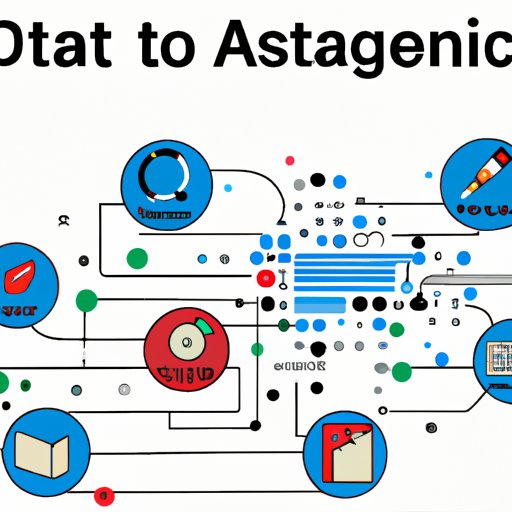
Exploring the Data Science Process: An Overview
Data science is an ever-evolving field that combines scientific methods, processes, algorithms, and systems to extract knowledge and insights from structured and unstructured data. As businesses and organizations continue to collect large volumes of data, data science has become an invaluable tool for making informed decisions. To better understand how data science works, it’s important to explore the data science process and its core components.
Definition of Data Science
Data science is a multidisciplinary field that combines mathematics, statistics, computer programming, and domain expertise to analyze and interpret data. Data science is used to uncover patterns and insights from large datasets, which can then be used to make predictions and drive decision-making. Data scientists use a variety of techniques and tools to extract useful information from data, including machine learning, natural language processing, and artificial intelligence.
What is the Data Science Process?
The data science process is the set of steps that a data scientist follows when working on a project. It includes gathering and organizing data, exploring and visualizing data, building models and predicting with data, and evaluating results. The data science process also involves understanding the problem, cleaning and preprocessing data, analyzing data, and deploying the model.

Mapping Out the Steps of a Data Science Project
The data science process typically begins with understanding and defining the problem. This involves developing an understanding of the problem and determining what data is needed to solve it. Once the problem is defined, the next step is to gather the appropriate data. This may involve collecting data from multiple sources, such as databases, surveys, or public records.
After the data is collected, it needs to be cleaned and preprocessed before it can be analyzed. This step involves removing any irrelevant or redundant data and formatting the data so that it can be easily understood. Once the data is ready, it can be analyzed using various techniques, such as descriptive statistics or machine learning algorithms. From there, the data scientist can build and evaluate models to test the accuracy of their predictions.
Finally, the data scientist can deploy the model by creating a system that automates the process of making predictions. This could involve developing an application or website that allows users to interact with the model. After the model is deployed, it can be monitored and evaluated to ensure that it is performing as expected.
What Does a Data Scientist Do? A Closer Look at the Data Science Process
A data scientist is responsible for interpreting data and communicating results. They must be able to explain the meaning behind the data and draw conclusions based on the analysis. Additionally, they need to be able to develop advanced models and algorithms to make predictions and identify patterns.
Breaking Down the Data Science Process into its Core Components
The data science process can be broken down into four core components: collecting and organizing data, exploring and visualizing data, modeling and predicting with data, and evaluating results. Collecting and organizing data involves gathering data from multiple sources and preparing it for analysis. Exploring and visualizing data involves using techniques such as descriptive statistics and data visualization to gain insights from the data. Modeling and predicting with data involves building models and algorithms to make predictions based on the data.
Finally, evaluating results involves testing the accuracy of the models and algorithms and ensuring that they are performing as expected. This is an important step in the data science process, as it helps to ensure that the models are reliable and can be used to make accurate predictions.

The Role of Technology in the Data Science Process
Technology plays an important role in the data science process. Data storage and processing technologies enable data scientists to store and manage large amounts of data. Machine learning and artificial intelligence algorithms allow data scientists to build models and make predictions. Automation and streamlining technologies help to simplify and speed up the data science process.
By leveraging these technologies, data scientists are able to efficiently and effectively analyze data and develop models that can be used to make informed decisions. As technology continues to evolve, so too will the data science process.
Conclusion
Data science is an ever-evolving field that combines scientific methods, processes, algorithms, and systems to extract knowledge and insights from structured and unstructured data. By exploring the data science process, its components, and the role of technology, we can gain a better understanding of how this powerful tool can be used to make informed decisions.
(Note: Is this article not meeting your expectations? Do you have knowledge or insights to share? Unlock new opportunities and expand your reach by joining our authors team. Click Registration to join us and share your expertise with our readers.)
